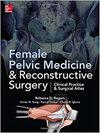择期剖宫产与盆底疾病的求证:系统综述和荟萃分析
IF 1.4
4区 医学
Q3 OBSTETRICS & GYNECOLOGY
Female Pelvic Medicine and Reconstructive Surgery
Pub Date : 2022-03-01
DOI:10.1097/SPV.0000000000001164
引用次数: 2
摘要
重要性更好地了解选择性剖宫产(CD)对骨盆底疾病发展的影响可以帮助产科医生为孕妇提供建议。目的本研究旨在进行系统回顾和荟萃分析,评估原发性选择性CD是否对盆底疾病有保护作用。研究设计使用MOOSE标准,检索电子数据库中比较初产妇盆底疾病患病率的研究。研究结果包括尿失禁(UI)、大便失禁(FI)、肛门失禁(AI)和盆腔器官脱垂(POP)。比较分娩前的乳糜泻(“选择性乳糜泻”)、分娩后的乳糜泻(“分娩乳糜泻”)和阴道分娩(VD)。风险比(rr)采用STATA计算。通过Cochrane同质性检验和I2统计量的回顾来评估研究间异质性。结果共纳入19项研究。选择性CD的总体UI患病率估计为7%(95%可信区间[CI], 3%-13%),分娩CD为14% (95% CI, 8%-21%), VD为26% (95% CI, 20%-32%)。荟萃分析显示,与分娩性CD相比,选择性CD后UI的风险降低(RR, 0.75;P = 0.011)或VD (RR, 0.43;P < 0.001)。与VD相比,选择性CD后FI或AI的风险降低,但与劳动CD相比没有降低。只有2项研究检查了POP,排除了荟萃分析。结论在初产妇中,与分娩CD相比,选择性CD可能对UI有保护作用。与分娩CD相比,选择性CD对FI和AI没有保护作用。需要更多关于选择性CD对POP的影响的数据。本文章由计算机程序翻译,如有差异,请以英文原文为准。
Seeking the Truth About Primary Elective Cesarean Delivery and Pelvic Floor Disorders: A Systematic Review and Meta-Analysis
Importance A better understanding of the effect of elective cesarean delivery (CD) on the development of pelvic floor disorders can help obstetricians counsel pregnant women. Objective This study aimed to perform a systematic review and meta-analysis evaluating whether primary elective CD is protective against pelvic floor disorders. Study Design Using the MOOSE criteria, electronic databases were searched for studies that compared the prevalence of pelvic floor disorders among primiparous women. Outcomes of interest were urinary incontinence (UI), fecal incontinence (FI), anal incontinence (AI), and pelvic organ prolapse (POP). Comparisons were made between CD before the onset of labor (“Elective CD”), CD after trial of labor (“Labor CD”), and vaginal delivery (VD). Risk ratios (RRs) were computed using STATA. Between-study heterogeneity was assessed via Cochrane’s homogeneity test and review of the I2 statistic. Results Nineteen studies were included. The overall prevalence of UI for Elective CD was estimated at 7% (95% confidence interval [CI], 3%–13%), Labor CD at 14% (95% CI, 8%–21%), and VD at 26% (95% CI, 20%–32%). Meta-analysis demonstrated a decreased risk of UI after Elective CD compared with Labor CD (RR, 0.75; P = 0.011) or VD (RR, 0.43; P < 0.001). There was a decreased risk of FI or AI after Elective CD compared with VD, but not when compared with Labor CD. Only 2 studies examined POP, precluding meta-analysis. Conclusions Among primiparous women, Elective CD may be protective against UI when compared with Labor CD. There was not a protective effect of Elective CD against FI and AI when compared with Labor CD. More data on the effect of elective CD on POP are needed.
求助全文
通过发布文献求助,成功后即可免费获取论文全文。
去求助
来源期刊

Female Pelvic Medicine and Reconstructive Surgery
OBSTETRICS & GYNECOLOGY-
CiteScore
2.10
自引率
12.50%
发文量
228
期刊介绍:
Female Pelvic Medicine & Reconstructive Surgery, official journal of the American Urogynecologic Society, is a peer-reviewed, multidisciplinary journal dedicated to specialists, physicians and allied health professionals concerned with prevention, diagnosis and treatment of female pelvic floor disorders. The journal publishes original clinical research, basic science research, education, scientific advances, case reports, scientific reviews, editorials and letters to the editor.
 求助内容:
求助内容: 应助结果提醒方式:
应助结果提醒方式:


